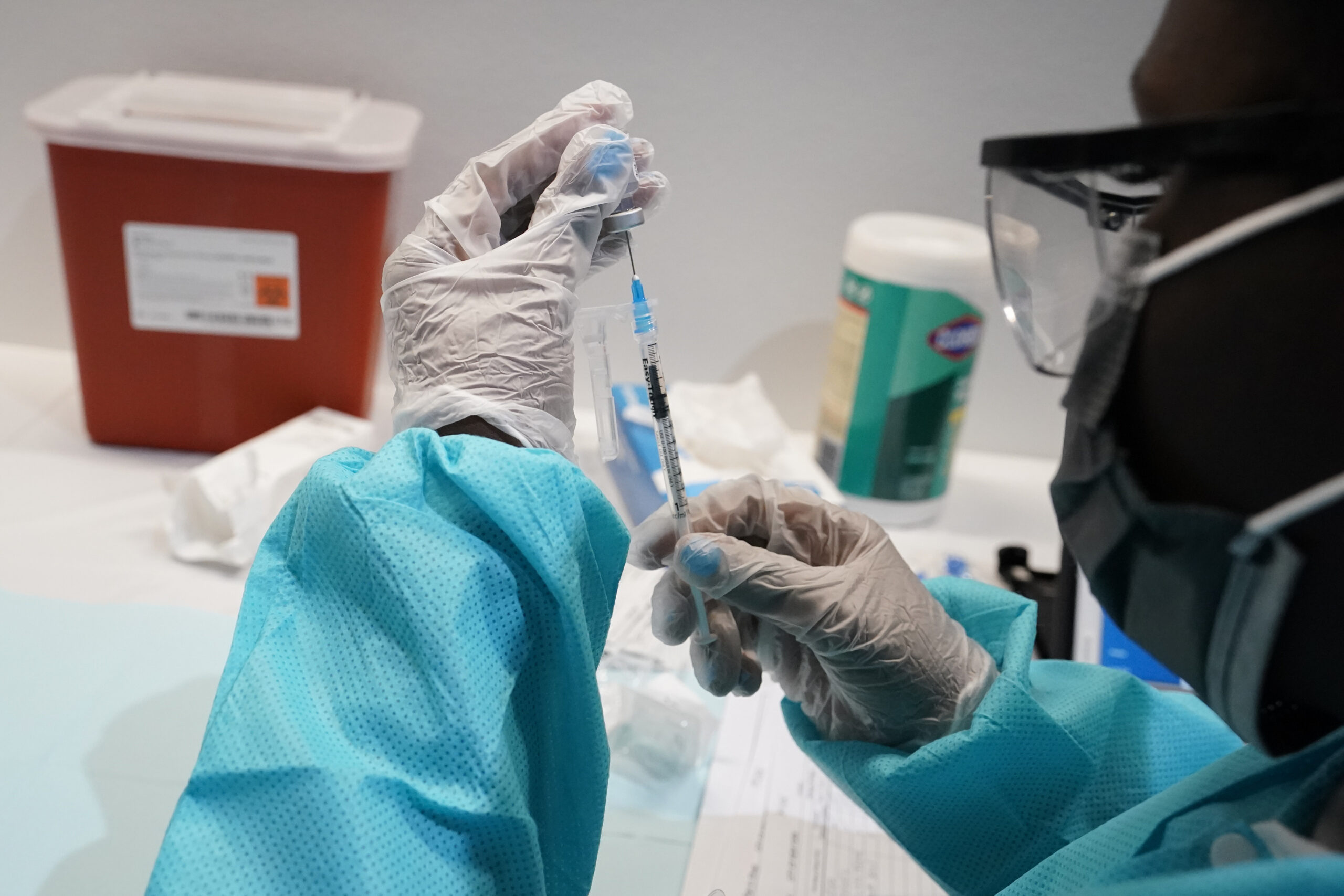MORGANTOWN – The FDA took three steps Monday to make Pfizer COVID vaccine boosters more widely available.
It expanded the booster age to include children ages 12-15. It reduced the wait time for a booster – for age 12 and up – from six months to five months. And for immunocompromised children ages 5-11, it allowed a third primary does (not the same as a booster) 28 days after the second dose.
“The recent rise in COVID-19 cases is concerning to all and today’s decision by the FDA to further expand the Emergency Use Authorization of a booster dose of our vaccine is critical to help us ultimately defeat this pandemic,” said Albert Bourla, Pfizer chairman and CEO in a release. “We continue to believe that broad use of boosters is essential to preserving a high level of protection against this disease and reducing the rate of hospitalizations.”
The FDA did not include the Moderna or Johnson & Johnson vaccines in its announcement.
Acting FDA Commissioner Janet Woodcock said, “Throughout the pandemic, as the virus that causes COVID-19 has continuously evolved, the need for the FDA to quickly adapt has meant using the best available science to make informed decisions with the health and safety of the American public in mind. With the current wave of the omicron variant, it’s critical that we continue to take effective, life-saving preventative measures such as primary vaccination and boosters, mask wearing and social distancing in order to effectively fight COVID-19.”
West Virginia’s COVID-19 czar Dr, Clay Marsh said the CDC is expected to follow suit as early as Wednesday after its Advisory Committee on Immunization Practices meets.
The FDA is trying to respond more rapidly, Marsh said, with children falling under a different risk profile with the omicron variant and the increased infectiousness of omicron. FDA used data from Israel for this decision and made the decision directly without channeling the process through its biologics subcommittee.
Marsh offered several observations about the current status of the pandemic as omicron displaces delta and case numbers rise across the world.
West Virginia’s active case count hit 15,015 on Monday, the highest number since Sept. 25. The death toll stood at 5,356.
Hospitalizations reached 721 (with 78.2% unvaccinated). The ICU number was 189 with 114 on ventilators (84.1% and 88.6% unvaccinated, respectively).
As Marsh has pointed out several times, hospitalizations following the September peak never dipped the way they did after the January 2021 surge.
Then, hospitalizations peaked at 818 on Jan. 5 and fell to 52 by July 4. This time, the number peaked at 1,012 on Sept. 24 but only fell to 498 on Nov. 25. Hospital systems remain strained even as cases climb.
“We know that the spread of the omicron variant is going to be at unprecedented levels,” he said.
He expects that all the vaccines will see their booster wait times tightened up, he said. Israel has started offering a fourth dose – a second booster – to people age 60 and up just four months after the first booster. Israel has reduced its first booster time to three months after the second Pfizer dose.
Omicron cases have been growing steadily in West Virginia, Marsh said, “We anticipate in the next week to two weeks we will see omicron replace delta as the most common sequenced form of COVID-19 in the state.” This spells trouble as flu and respiratory syncytial virus (also known as RSV) cases also grow. “We’re seeing a convergence of viral respiratory infections that are, I think, very quickly going to explode.”
The Dominion Post mentioned that fewer people are wearing masks in public these days. With the pandemic entering its third calendar year, Marsh said people have grown fatigued. “The challenge is that omicron is likely to infect multiples of numbers of people that delta infected.”
We are expecting to see all-time high levels of pediatric hospital admissions, he said, because omicron infects the higher, airway, part of the lung, not the lower, oxygen exchanging portion of the lung. Kids have much smaller airways and the infection inflames the airways and makes it harder for them to breathe.
“I think it’s going to be really challenging for our country and our state, because the hospitals are going to be really challenged in a way we haven’t seen before – and the kids in hospital beds in other parts of the country are almost all unvaccinated.” An unvaccinated child is 20 times more likely of being hospitalized.
While fewer are wearing masks, Marsh said the more-infectious omicron variant makes it more important to wear one – and not just an ordinary mask. CDC and other experts are recommending NIOSH-approved N95 or KN95 masks.
While they may not be found in large numbers in most stores, they can be found online, he said. And be sure to obtain a NIOSH-approved mask, not an unapproved imitation bearing the N95 or KN95 identificaton. “It’s important for people to considering upgrading for the coming weeks to maybe two months or so.”
Tweet David Beard @dbeardtdp Email dbeard@dominionpost.com




